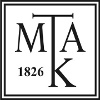Galambos, Imre (2025) Mole Crickets and Ants, Reconsidered. ACTA ORIENTALIA ACADEMIAE SCIENTIARUM HUNGARICAE, 78 (1). pp. 69-84. ISSN 0001-6446
|
Text
062-article-p69.pdf - Published Version Restricted to Repository staff only Download (569kB) |
Abstract
A range of early Chinese texts features the term louyi 螻蟻, which modern scholars and translators often interpret as signifying mole crickets and ants. This essentially means that they understand the two characters as standing for two different words, each denoting a different animal. However, a closer look at the examples in early Chinese texts shows that this was probably a disyllabic word referring to a single insect, namely, ants, with no involvement of mole crickets. Understanding what the term actually meant is important because it demonstrates how we, basing ourselves on pre-modern commentarial and lexicographic traditions, often unnecessarily separate compound words into their constituents. Although few specialists of pre-modern China today would subscribe to the much-criticized one-character-one-word model, translations still often treat the two components of disyllabic words as separate entities, even when the context makes it clear that they probably stand for a single word. More interestingly, this phenomenon sheds light on the development of the core vocabulary of sinology, revealing its cumulative and often highly conservative trajectory.
| Item Type: | Article |
|---|---|
| Uncontrolled Keywords: | louyi, ants, mole crickets, disyllabic words, lexicography, commentaries |
| Subjects: | P Language and Literature / nyelvészet és irodalom > P0 Philology. Linguistics / filológia, nyelvészet P Language and Literature / nyelvészet és irodalom > PN Literature (General) / irodalom általában |
| SWORD Depositor: | MTMT SWORD |
| Depositing User: | MTMT SWORD |
| Date Deposited: | 25 Jun 2025 08:40 |
| Last Modified: | 25 Jun 2025 08:40 |
| URI: | https://real.mtak.hu/id/eprint/220440 |
Actions (login required)
 |
Edit Item |



